Papers by Alessia Frisetti
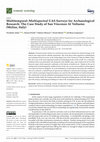
Remote Sensing
Unmanned aerial vehicles are currently the most used solution for cultural heritage in the field ... more Unmanned aerial vehicles are currently the most used solution for cultural heritage in the field of close range and low altitude acquisitions. This work shows data acquired by multitemporal and multispectral aerial surveys in the archaeological site of San Vincenzo al Volturno (Molise, Italy). The site is one of the most important medieval archaeological sites in the world. It is a monastic settlement that was particularly rich during the early Middle Ages, and is famous for its two full-frescoed crypts which represent a milestone in the history of medieval art. Thanks to the use of multispectral aerial photography at different times of the year, an area not accessible to archaeological excavation has been investigated. To avoid redundancy of information and reduce the number of data to be analysed, a method based on spectral and radiometric enhancement techniques combined with a selective principal component analysis was used for the identification of useful information. The combin...
Annali - Università degli Studi Suor Orsola Benincasa, 2011
il castello di rupecanina e il cantiere didattico di archeologia medioevale. stato della ricerca ... more il castello di rupecanina e il cantiere didattico di archeologia medioevale. stato della ricerca e proposte future per lo studio delle fasi post-antiche della media Valle del Volturno Sono a cura di A. Frisetti i testi dei parr. 1, 1.2, 1.3 e 1.4; sono a cura di Luigi Di Cosmo i parr. 2, 2.1, 2.2, 2.3 e 2.4; è a cura di I. Ebreo il paragrafo 3; è a cura di N. Abate il paragrafo 4. 1 L'altura è stata sicuramente oggetto di frequentazione già in epoca pre-romana, come testimoniano le murature in opera poligonale inglobate nella cinta medioevale.
Annali - Università degli Studi Suor Orsola Benincasa, 2004
Cinque chiese medievale fra Molise e Campania. Un'indagine conoscitiva preliminare
IV Ciclo di Studi Medievali
RACTA 2018: Ricerche di Archeologia Cristiana, Tardantichità e Altomedioevo, 2019
Note sull'utilizzo delle vasche accessorie ai fonti battesimali del Mediterraneo tardoantico (IV-... more Note sull'utilizzo delle vasche accessorie ai fonti battesimali del Mediterraneo tardoantico (IV-VII sec.) .
Un villaggio di capanne? L'insediamento di Rupe Canina (Ce) prima dei Normanni. Nuove riflessioni e problematiche di un sito d'altura nella Langobardia Minor
Il contributo propone una prima sintesi delle fasi altomedioevali individuate nel corso degli sca... more Il contributo propone una prima sintesi delle fasi altomedioevali individuate nel corso degli scavi presso il sito fortificato di Rupecanina, in comune di Sant'Angelo d'Alif
Medioevo nelle Valli Insediamento, società, economia nei comprensori di valle tra Alpi e Appennin... more Medioevo nelle Valli Insediamento, società, economia nei comprensori di valle tra Alpi e Appennini (VIII-XIV sec.) Medioevo nelle Valli Insediamento, società, economia nei comprensori di valle tra Alpi e Appennini (VIII-XIV sec.
Il CARE_Campania ed il CARE_Molise: analisi dei risultati e ricostruzione della geografia religiosa delle aree indagate
Hortus Artium Medievalium
The 847 CE earthquake in central-southern Italy: New hints from archaeosismological and geophysical investigations in the Volturno River Valley area
Tectonophysics
Mapping Medieval Christianity. CARE-GIS
Journal on Computing and Cultural Heritage
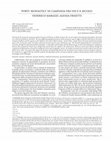
Hortus Artium Medievalium, 2016
During the IX century the monastery of San Vincenzo al Volturno in Molise becames the core of a t... more During the IX century the monastery of San Vincenzo al Volturno in Molise becames the core of a trade system of goods and products, based also on a network of harbours and docks. e most di cult geographical position of the monastery, may be suggest a possible link between the mediterranean harbours and the seaports on the Volturno river such as Ponte Latrone, "Castro Porto", Capua (source of several architectonical spolia used in the construction yard), and other settlements located next the course of Volturno river. e network organized by the community of S. Vincenzo, through the acquisition of lands and goods, is comparable with the plan setted by Montecassino. In this work we'll propose a comparison between these monasteries which try to enlarge their presence from the inland to the coastal areas. We'll try to prove these theories through the comparison of informations achieved by reading of written and cartographic sources, the analysis of architectures and the study of some precious objects (iron, silver, ivory, glass) that suggest the exsistence of relationships between the monasteries and european and non-european countries. In conclusion we suggest that this network would be the foundation of the movement of goods, products and specialized workers whith their knowledges and techonologies.
Hortus Artium Medievalium
The new informations, deduced from the last archaeological excavations in San Vincenzo al Volturn... more The new informations, deduced from the last archaeological excavations in San Vincenzo al Volturno, complete owr knowledges about the organisation of work in the benedictine settlement. The analysis of masonries and the religious buildings census between Northern Campania and Molise, allow us to propose some theories about the diffusion of these technical choices from the IX century to the XII century in this area. Also, in this work we'll prove how the communities of San Vincenzo and Montecassino, contributed to encourage the diffusion of the culture, particularly in the architectural experimentation.
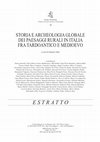
Events which involved Campanian bishoprics between Late Antiquity and the Early Middle Ages -incl... more Events which involved Campanian bishoprics between Late Antiquity and the Early Middle Ages -including sees that were suppressed, that came back to life or were newly founded -has been the starting point for understanding how and where Christian buildings appeared. Data examined in this paper involve the provinces of Avellino, Benevento, Caserta and the urban territory of Naples, plus preliminary observations concerning the provinces of Isernia and Campobasso in Molise. The research team of LATEM (University of Suor Orsola Benincasa, Naples), has catalogued more than 100 buildings and architectural complexes, which allow to understand the diffusion of Christianity in a geographical area that appears particularly rich of urban and rural settlements. The analysis of these data allow us to examine other topics of some importance for archaeology of the Early Middle Ages, such as the relationship between the religious buildings and the ancient roads, the evolutions of landscape during the post classical period, the spread of architectural models and building techniques and the study of pictorial decoration.
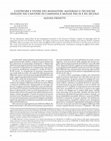
consentito l'acquisizione di un'importante mole di dati su numerosi insediamenti monastici a cava... more consentito l'acquisizione di un'importante mole di dati su numerosi insediamenti monastici a cavallo di VIII-X e XI-XII secolo 1. La ricognizione ha permesso innanzitutto uno studio delle tecniche e dei materiali edili impiegati nei differenti cantieri con alcuni spot di approfondimento sulle malte, oggetto di analisi chimico fisiche volte alla conoscenza delle ricette e delle fasi di produzione. Ciò che si vuole presentare in questa sede è il quadro evolutivo di sviluppo e diffusione di alcune tecniche edilizie e soluzioni architettoniche, dimostrando al contempo che due tra i maggiori monasteri dell'Italia centro meridionale, San Vincenzo al Volturno e San Benedetto di Montecassino, hanno evidentemente svolto un ruolo di promozione e dif-fusione della cultura ed in particolare dell'architettura in un ampio contesto geografico. Il punto di partenza di queste ricerche è stato l'insediamento monastico di San Vincenzo i cui scavi decennali hanno consentito di indagare i molteplici aspetti che riguardano l'architettura monastica ed il cantiere edile nell'altomedioevo 2. Alle conoscenze sugli aspetti tecnici delle fasi edilizie che hanno interessato i vari settori del monastero, presentati in più sedi scientifiche nel corso dell'ultimo decennio, si sono aggiunti i dati provenienti dalle indagini più recenti ese-guite nell'area lungo la sponda del Volturno e sul Colle della Torre. Riguardo la prima, oggetto di recente pubblicazione, si era già presentata qualche novità nel corso del convegno IRCLAMA del 2015, con particolare riferimento alle tecniche del recinto monastico il cui cantiere è inquadrabile nel corso del IX secolo 3 (fig. 1). Lo stesso fronte cronologico sembra aver interessato anche le strutture individuate sul Colle della Torre ad ovest dell'insediamento. In questo contesto le indagini del 2013-2014 hanno portato alla luce sul pianoro sommitale un impo-nente edificio, realizzato con grandi blocchi in travertino, ed attraversato da un muro di spina (o mur de refend) con andamento E/O. L'edificio, il cui perimetro non è ancora del tutto noto, accessibile ad ovest dove si conserva una soglia in calcare con alloggio per il cardine della porta, sarebbe stato interessato da un incendio, databile sul finire del IX secolo grazie all'analisi del materiale ceramico e quindi, con buona probabilità associabile all'attacco saraceno dell'881. Pertanto la datazione di queste strutture che definiscono un'organizzazione topografica dell'area mai immaginata prima d'ora, è facilmente inquadrabile nella prima metà del IX secolo, in accordo con la fase di maggiore diffusione della tecnica a grandi blocchi tra Lazio e Campania 4. Allo stato UDC: 27-788(450.674)"08/11" A. Frisetti 726.71(450.674)"08/11" The new informations, deduced from the last archaeological excavations in San Vincenzo al Volturno, complete owr knowledges about the organisation of work in the benedictine settlement. The analysis of masonries and the religious buildings census between Northern Campania and Molise, allow us to propose some theories about the diffusion of these technical choices from the IX century to the XII century in this area. Also, in this work we'll prove how the communities of San Vincenzo and Montecassino, contributed to encourage the diffusion of the culture, particularly in the architectural experimentation.

La valle del Volturno, che si sviluppa a cavallo di Campania e Molise, rientra nel più ampio terr... more La valle del Volturno, che si sviluppa a cavallo di Campania e Molise, rientra nel più ampio territorio del Samnium e nell'altomedioevo corrisponde ad un importante comparto territoriale della Langobardia Minor. Il presente intervento vuole sintetizzare i dati delle recenti indagini storicoarcheologiche che hanno portato all'individuazione e al censimento di oltre 100 insediamenti tra complessi religiosi e siti fortificati d'altura. Lo studio di queste realtà monumentali, consente di definire con maggiore chiarezza le forme di occupazione post classiche in questo territorio di confine, fino ad oggi poco conosciuto. Attraverso le fonti scritte documentarie e le tracce materiali è possibile ricostruire la rete insediativa -costituita da villaggi, curtes, monasteri e siti fortificati d'altura -i cui nodi cruciali sono rappresentati da centri urbani di antica fondazione quali Capua, Benevento, Venafro, Teano ed Alife. I dati acquisiti consentono inoltre di chiarire il progressivo evolversi di questa rete, soprattutto nel momento cruciale che vede il territorio oggetto del passaggio di testimone dai longobardi ai normanni. In particolare, l'analisi dettagliata delle strutture superstiti ha portato all'acquisizione di numerosi dati inerenti le tecniche murarie. Pertanto in questa sede si presenterà un approfondimento volto proprio a comprendere l'organizzazione del cantiere edile medioevale e la sua evoluzione nel corso dei secoli. La diffusione delle tecniche e delle conoscenze è infatti, il punto di partenza per comprendere anche il modus operandi delle maestranze specializzate i cui movimenti svelano una rete di contatti tra diverse committenze.


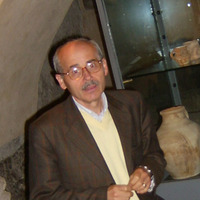
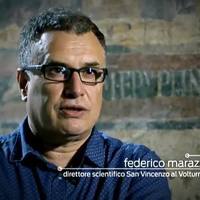







Uploads
Papers by Alessia Frisetti